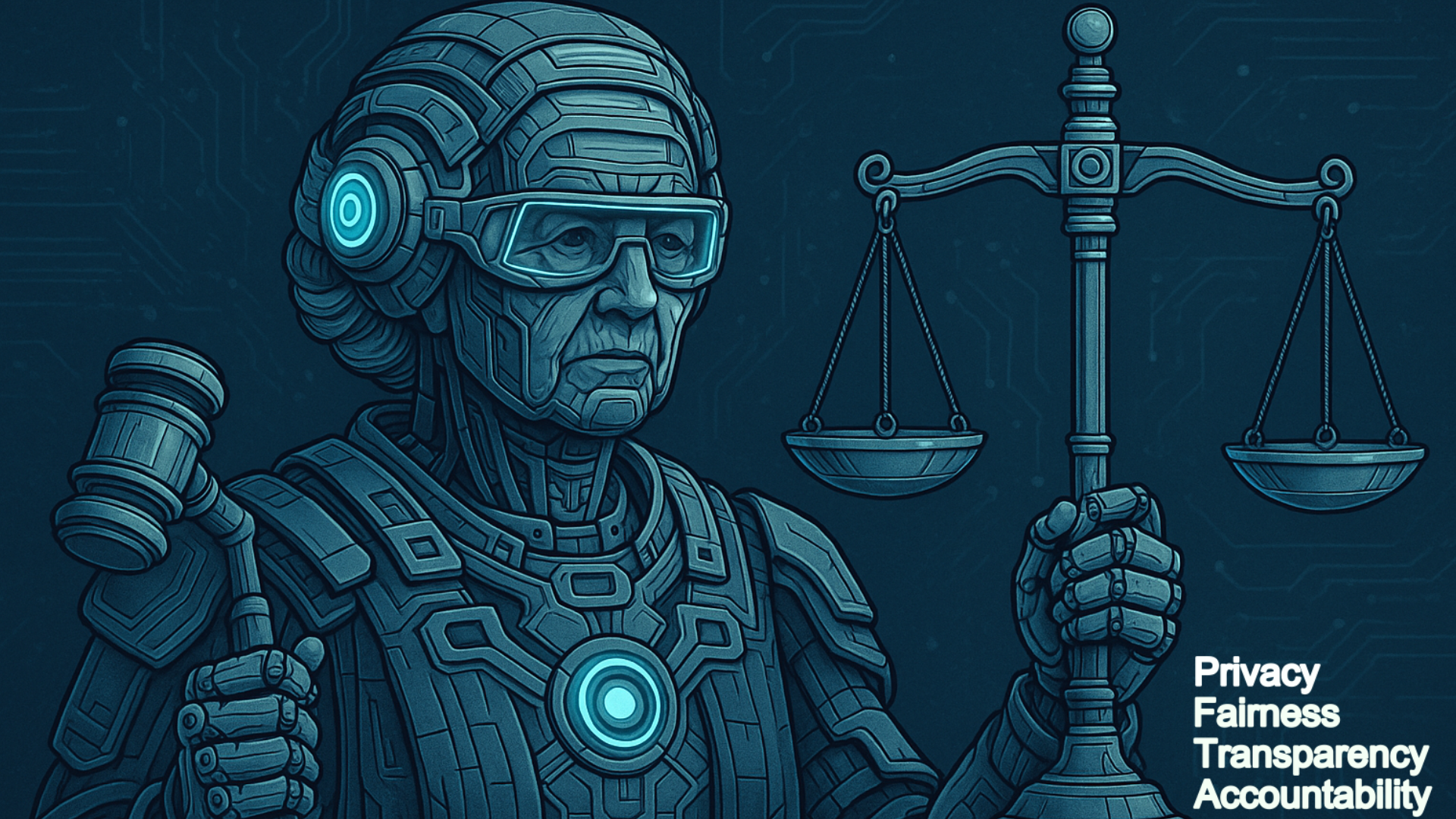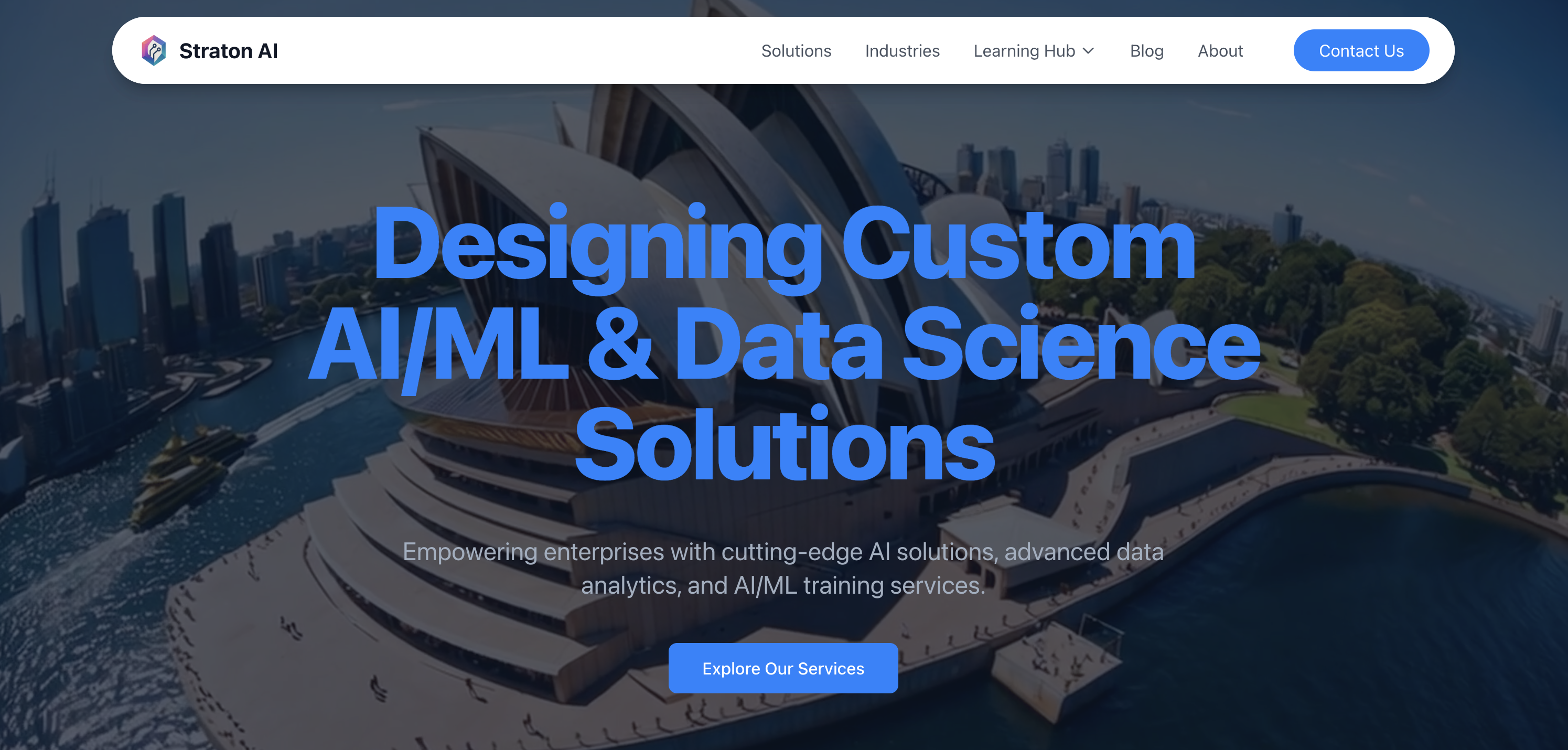The Rise of Large Language Models in Enterprise: Strategic Implementation Approaches
Large Language Models (LLMs) have rapidly evolved from research curiosities to transformative enterprise tools, reshaping how businesses operate across departments and industries. Organizations are now moving beyond experimentation to systematic implementation of LLMs for competitive advantage. This article explores the latest approaches, technologies, and strategies for successfully integrating LLMs into enterprise environments.
The Enterprise LLM Landscape in 2025
The enterprise LLM market has matured significantly, with several distinct deployment models emerging:
Key Enterprise LLM Deployment Approaches
| Deployment Model | Key Characteristics | Ideal Use Cases | Trade-offs |
|---|---|---|---|
| Proprietary Cloud APIs | Managed services from major providers (OpenAI, Anthropic, Google) | General-purpose applications, rapid deployment | Data privacy concerns, ongoing costs, limited customization |
| Enterprise-tuned SaaS | Pre-trained models with industry-specific fine-tuning | Domain-specific workflows, regulated industries | Higher costs, vendor lock-in potential |
| Private Cloud Deployment | Open-source or licensed models run in private cloud | Sensitive data processing, customized applications | Infrastructure complexity, higher expertise required |
| On-premises Systems | Fully controlled local infrastructure | Highly regulated industries, air-gapped environments | Significant hardware investment, ongoing maintenance |
| Hybrid Architectures | Combination of API and local models based on use case | Organizations with varying data sensitivity needs | Integration complexity, multiple systems to manage |
According to recent Gartner research, 78% of enterprises are now using at least one LLM in production, with 46% employing multiple models across different business functions. The average enterprise now maintains 3.4 different LLM deployment methods simultaneously, tailored to specific use cases and data sensitivity requirements.
Emerging Enterprise LLM Technologies
Several technological innovations are driving the expansion of LLMs in enterprise settings:
1. Small Language Models (SLMs) and Mixture of Experts (MoE)
A significant shift from general-purpose massive models to more efficient, specialized approaches:
- Domain-Specific SLMs: Compact models (1-10B parameters) fine-tuned for narrow domains that match or exceed performance of larger models for specific tasks while requiring fraction of the compute resources.
- Enterprise MoE Architectures: Systems that route queries to specialized expert models based on the query type, combining the benefits of specialized models with the versatility of larger systems.
- Sparse Model Activation: Technologies that selectively activate only relevant portions of large models, dramatically reducing computation requirements while maintaining performance.
Implementation Example: Financial services firm Goldman Sachs deployed a specialized MoE system combining five domain-expert models (regulatory compliance, market analysis, risk assessment, client communication, and financial reporting) that outperformed a single large model while reducing inference costs by 68%.
2. Retrieval-Augmented Generation (RAG) Evolution
RAG has evolved significantly beyond simple document retrieval:
- Multi-stage RAG Pipelines: Advanced architectures with separate retrieval, reranking, and generation stages optimized independently.
- Hybrid Retrieval Mechanisms: Systems combining semantic search, keyword matching, and knowledge graphs for more precise information access.
- Recursive Retrieval: Self-refining systems that iteratively improve queries based on initial retrieval results, especially effective for complex research tasks.
- Multi-modal RAG: Systems incorporating text, images, tables, and structured data in both retrieval and generation processes.
Case Study: Pharmaceutical company Novartis implemented a multi-stage RAG system for drug discovery research that increased relevant information retrieval by 76% compared to traditional search, allowing researchers to identify critical connections between compounds that had been previously overlooked.
3. Fine-tuning and Customization Advances
New approaches are making model customization more accessible and effective:
- Parameter-Efficient Fine-Tuning (PEFT): Techniques like LoRA (Low-Rank Adaptation) and QLoRA (Quantized LoRA) enabling deep customization with minimal computational overhead.
- Adaptive Prompt Tuning: Methods for automatically optimizing prompts based on specific enterprise requirements and user feedback.
- Continuous Learning Frameworks: Systems that incrementally update models with new enterprise data without full retraining.
- Few-Shot Customization: Advanced techniques requiring only dozens of examples to adapt models to enterprise-specific tasks.
ROI Metrics: A McKinsey study of enterprise LLM implementations found that companies using PEFT techniques achieved 34% higher task-specific performance while reducing customization costs by 85% compared to traditional fine-tuning approaches.
4. Enterprise-focused LLM Infrastructure
The infrastructure supporting LLMs has evolved to meet enterprise requirements:
- Optimized Inference Engines: Specialized software stacks like vLLM, NVIDIA TensorRT-LLM, and Intel's OpenVINO for LLMs that significantly reduce inference latency and costs.
- Enterprise Model Hubs: Central repositories that manage model versions, usage patterns, and performance metrics across an organization.
- Hardware Acceleration Solutions: Purpose-built AI accelerators optimized for LLM inference, including specialized chips from NVIDIA (H200), AMD (MI300X), and emerging providers like Cerebras and Groq.
- Serverless LLM Infrastructure: On-demand scaling solutions that automatically provision resources based on usage patterns.
Industry Benchmark: The Groq LPU inference engine demonstrated 10-30x faster inference speeds compared to traditional GPU infrastructure for enterprise-scale Claude 3 Opus deployments, enabling real-time responses even for complex enterprise workloads.
Strategic Enterprise Applications
While chatbots received early attention, enterprises are now implementing LLMs across more sophisticated and strategic functions:
1. Knowledge Work Transformation
LLMs are reshaping how enterprises manage and leverage knowledge:
- Enterprise Knowledge Mining: Extracting structured insights from unstructured document repositories, legacy systems, and tribal knowledge.
- AI-enhanced Decision Support: Systems that analyze complex scenarios, identify options, and project potential outcomes to support executive decision-making.
- Automated Research Synthesis: Tools that continuously scan industry publications, market reports, and competitor activities to generate strategic intelligence.
- Intelligent Process Documentation: Systems that observe and document enterprise processes, creating standardized playbooks and identifying efficiency opportunities.
Measured Impact: Consulting firm Deloitte implemented an LLM-based knowledge mining system across their professional services practice, reducing research time by 73% and improving proposal quality scores by 28%, directly contributing to a 15% increase in win rates.
2. Enhanced Personalization at Scale
LLMs are enabling unprecedented personalization capabilities:
- Dynamic Content Generation: Personalized communication, product descriptions, and recommendations tailored to individual customer profiles and contexts.
- Hyperpersonalized Customer Journeys: End-to-end experiences that adapt at every touchpoint based on customer history, preferences, and immediate context.
- Semantic Customer Segmentation: LLM-powered analysis that identifies nuanced customer segments based on behaviors, preferences, and needs rather than traditional demographic factors.
- Adaptive Interaction Systems: Interfaces that dynamically adjust communication style, complexity, and content based on user engagement patterns.
Implementation Results: E-commerce platform Shopify's LLM-powered personalization engine increased conversion rates by 32% and average order value by 17% across merchants implementing their AI-driven product description and recommendation systems.
3. Intelligent Workflow Automation
Beyond simple RPA, LLMs are enabling truly intelligent process automation:
- Adaptive Document Processing: Systems that handle diverse document formats and layouts without pre-programmed templates, extracting relevant information regardless of structure.
- Cognitive Process Automation: Workflows that understand context, handle exceptions, and make nuanced decisions previously requiring human judgment.
- Multi-modal Process Mining: LLM-based systems that analyze text, images, and structured data to identify and optimize business processes across departments.
- Intelligent Quality Assurance: LLM-powered systems that review work outputs against complex criteria, ensuring compliance and quality.
Business Impact: Insurance company Munich Re deployed LLM-based document processing across claims operations, reducing processing time by 68% while simultaneously decreasing error rates by 41%, resulting in $43M annual operational savings.
4. Enterprise-wide Copilots and Agents
Moving beyond single-task assistants to integrated enterprise support systems:
- Role-Specific Copilots: Specialized assistants that understand the full context of specific job functions, providing relevant guidance and automation.
- Agentic Workflows: Systems that can independently execute multi-step business processes, accessing multiple systems and making contextual decisions.
- Collaborative AI Teams: Multiple specialized agents working together to solve complex problems, each with different expertise and capabilities.
- Learning Copilots: Systems that observe user activities, identify patterns, and proactively suggest optimizations or automations.
Adoption Metrics: Microsoft reported that enterprise customers implementing role-specific copilots saw average productivity gains of 37% across finance, sales, and customer service functions, with the highest gains (52%) in complex analytical roles where the copilot could augment specialized domain knowledge.
Implementation Approaches and Frameworks
Leading enterprises are adopting structured approaches to LLM implementation:
1. The LLM Capabilities Matrix
A strategic framework for identifying and prioritizing LLM opportunities:
| Information Access | Content Generation | Process Automation | Decision Support | |
|---|---|---|---|---|
| Strategic Value | Knowledge democratization, reduced search time | Marketing scale, personalization | Operational efficiency, consistency | Better decisions, reduced biases |
| Technical Complexity | Medium (RAG implementation) | Low-Medium (prompt engineering) | High (system integration) | Very High (reasoning, trust) |
| Data Requirements | Enterprise corpus, taxonomies | Style guides, brand assets | Process documentation, examples | Historical decisions, success metrics |
| Change Management | Moderate | Low | High | Very High |
Organizations use this matrix to systematically assess potential LLM applications across dimensions of strategic value, technical feasibility, data readiness, and organizational readiness.
2. The Enterprise LLM Stack
A comprehensive technical architecture for enterprise LLM deployment:
- Foundation Layer: Base models, compute infrastructure, and data storage
- Enhancement Layer: Fine-tuning pipelines, retrieval systems, and evaluation frameworks
- Integration Layer: APIs, authentication, monitoring, and enterprise system connectors
- Application Layer: User interfaces, workflow integration, and specialized applications
- Governance Layer: Monitoring, security, compliance, and responsible AI controls
This layered approach allows organizations to build consistent capabilities while enabling flexibility in specific implementations.
3. The Hybrid LLM Implementation Framework
A strategy for balancing capability, cost, and control:
- Tier 1 (External APIs): General tasks with non-sensitive data using cloud APIs
- Tier 2 (Enterprise SaaS): Industry-specific tasks with moderate sensitivity using specialized providers
- Tier 3 (Private Cloud): Sensitive operations deployed on private cloud infrastructure
- Tier 4 (On-premises): Highly regulated or mission-critical applications on dedicated infrastructure
Organizations implement policies that automatically route tasks to the appropriate tier based on data classification, performance requirements, and cost considerations.
Implementation Example: Healthcare provider Kaiser Permanente developed a hybrid LLM architecture that processes general administrative content via external APIs, routes patient-adjacent information through specialized healthcare models in private cloud, and keeps all protected health information (PHI) within on-premises infrastructure, achieving both cost efficiency and regulatory compliance.
Overcoming Enterprise Implementation Challenges
Organizations face several common challenges when implementing LLMs at scale:
1. Data and Knowledge Integration
Strategies for connecting LLMs with enterprise information:
- Unified Knowledge Graphs: Structured representations of enterprise knowledge that provide context and relationships beyond document retrieval.
- Vector Database Optimization: Advanced techniques for efficient storage and retrieval of enterprise-scale embedding databases.
- Multimodal Data Integration: Methods for incorporating text, images, numerical data, and structured records into LLM processing pipelines.
- Dynamic Data Connection: Real-time integration with operational systems to ensure LLMs access current information.
Technical Approach: Law firm Clifford Chance implemented a hybrid retrieval system combining dense vector search, sparse retrieval, and a legal knowledge graph, increasing retrieval accuracy by 43% compared to traditional RAG approaches, particularly for complex legal queries requiring understanding of case relationships and precedents.
2. Responsible AI and Governance
Frameworks for ensuring safe, ethical LLM deployment:
- Enterprise Guardrails: Customized safety systems that align LLMs with organizational values and compliance requirements.
- Output Validation Pipelines: Automated systems that verify LLM outputs against factual databases and compliance rules.
- Responsible AI Committees: Cross-functional governance groups that establish policies and review high-risk applications.
- Continuous Monitoring: Systems that track LLM outputs, usage patterns, and potential risks across the enterprise.
Governance Model: Financial institution JPMorgan Chase established a multi-tiered LLM governance framework with automated testing of all model outputs against regulatory requirements, resulting in zero compliance incidents across 36 production LLM applications handling sensitive financial information.
3. Integration with Legacy Systems
Approaches for connecting LLMs with existing enterprise technology:
- API Orchestration Layers: Middleware that facilitates communication between LLMs and legacy systems without direct integration.
- Agentic Interfaces: LLM-powered agents that can operate legacy interfaces as a human would, without requiring API development.
- Hybrid Processing Pipelines: Workflows that combine traditional automation with LLM intelligence for complex processes.
- Progressive Migration Strategies: Phased approaches that gradually incorporate LLM capabilities into existing systems.
Integration Case Study: Manufacturing company Siemens developed an LLM orchestration layer that connected their AI models with 17 legacy systems spanning inventory management, supply chain, and production planning without modifying the underlying applications, accelerating their digital transformation timeline by an estimated 3 years.
Industry-specific LLM Applications
Different sectors are finding unique high-value applications for LLMs:
1. Financial Services
- Regulatory Compliance Automation: LLMs that interpret complex regulations, assess compliance, and generate required documentation.
- Algorithmic Trading Enhancement: Models that analyze market news, sentiment, and trends to augment quantitative trading strategies.
- Personalized Financial Advice: Systems that provide customized guidance based on individual financial situations, goals, and risk profiles.
- Fraud Pattern Detection: LLMs that identify subtle anomalies and emerging fraud schemes across transactions.
2. Healthcare and Life Sciences
- Clinical Decision Support: Systems that analyze patient records, research literature, and treatment guidelines to support physician decision-making.
- Drug Discovery Acceleration: LLMs trained on chemical, biological, and pharmaceutical data to identify promising compounds and predict interactions.
- Medical Documentation Assistance: Tools that generate accurate clinical notes from patient encounters while ensuring compliance with documentation standards.
- Treatment Pathway Optimization: Models that identify optimal treatment approaches based on patient-specific factors and outcomes data.
3. Manufacturing and Supply Chain
- Predictive Maintenance Enhancement: Systems that combine sensor data with maintenance records and technical documentation to predict equipment failures.
- Supply Chain Resilience: LLMs that analyze global events, supplier data, and logistics information to identify potential disruptions and recommend mitigations.
- Design Optimization: Tools that suggest engineering improvements based on performance data, materials science, and manufacturing constraints.
- Quality Control Augmentation: Models that analyze defect patterns, process parameters, and quality metrics to identify root causes and suggest improvements.
The Future of Enterprise LLMs: Emerging Trends
Several developments will shape the evolution of enterprise LLMs in the coming years:
1. Multimodal Enterprise Systems
LLMs are rapidly expanding beyond text to incorporate multiple data types:
- Visual Understanding: Processing images, diagrams, and visual documents as effectively as text.
- Audio Analysis: Transcribing, understanding, and generating speech and other audio content.
- Numerical Reasoning: Enhanced capabilities for financial analysis, scientific calculations, and statistical reasoning.
- Unified Multimodal Interfaces: Seamless interactions that combine text, voice, visual, and structured data inputs and outputs.
2. Autonomous Enterprise Agents
LLMs are evolving from tools to autonomous agents:
- Self-improving Systems: Agents that learn from their interactions, refining their capabilities without explicit retraining.
- Multi-agent Ecosystems: Networks of specialized agents that collaborate to solve complex enterprise problems.
- Long-term Planning Capabilities: Systems that can develop and execute multi-stage plans over extended timeframes.
- Enterprise Digital Twins: Comprehensive simulations of business operations that enable scenario testing and optimization.
3. Enterprise-specific Foundation Models
The shift toward custom foundation models built for specific enterprises:
- Private Data Pre-training: Models built from the ground up with enterprise data rather than fine-tuned after generic pre-training.
- Industry-specific Architectures: Model designs optimized for particular domains rather than general-purpose architectures.
- Lightweight Deployment Models: Specialized small models that outperform larger general models for specific enterprise tasks.
- Continuous Learning Systems: Models that evolve with the enterprise, incorporating new data and feedback in real-time.
Conclusion: Strategic Considerations for Enterprise Leaders
As LLMs continue to transform enterprise operations, organizational leaders should focus on several key considerations:
- Strategic Alignment: Identify LLM opportunities that directly support core business objectives rather than implementing AI for its own sake.
- Capability Building: Develop internal expertise in prompt engineering, model evaluation, and LLM integration rather than relying exclusively on vendors or consultants.
- Governance Foundation: Establish comprehensive policies for responsible AI use, data security, and compliance before widespread deployment.
- Ecosystem Approach: Build a flexible architecture that can incorporate new models and capabilities as the technology rapidly evolves.
- Organizational Adaptation: Prepare for significant changes in workflows, skills requirements, and organizational structures as LLMs reshape knowledge work.
The organizations that will derive the greatest value from LLMs are those that view them not as isolated tools but as transformative capabilities that require thoughtful integration with business strategy, existing systems, and organizational culture.
Ready to Transform Your Enterprise with LLMs?
Straton AI specializes in developing strategic LLM implementation roadmaps and custom solutions for enterprise environments. Our approach combines deep technical expertise with business process understanding to deliver measurable results. Contact our team today to discuss how we can help you harness the power of large language models across your organization.
References and Further Resources:
- Gartner Research: "Market Guide for Large Language Models in the Enterprise"
- McKinsey Global Institute: "The Economic Potential of Generative AI"
- MIT Sloan Management Review: "Implementing AI: A Framework for Success"
- Stanford HAI: "Enterprise AI Index Report"
- Accenture: "The Business of Large Language Models"





